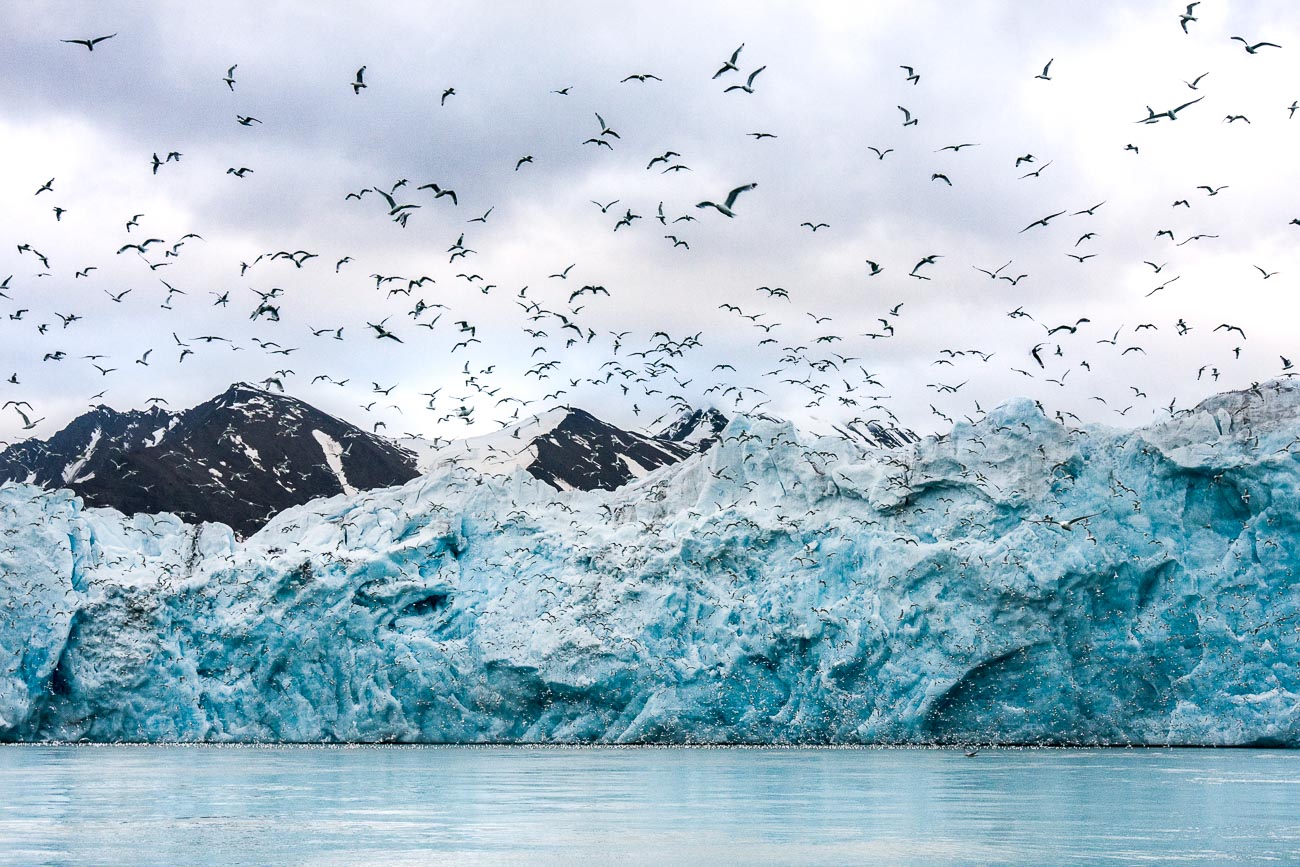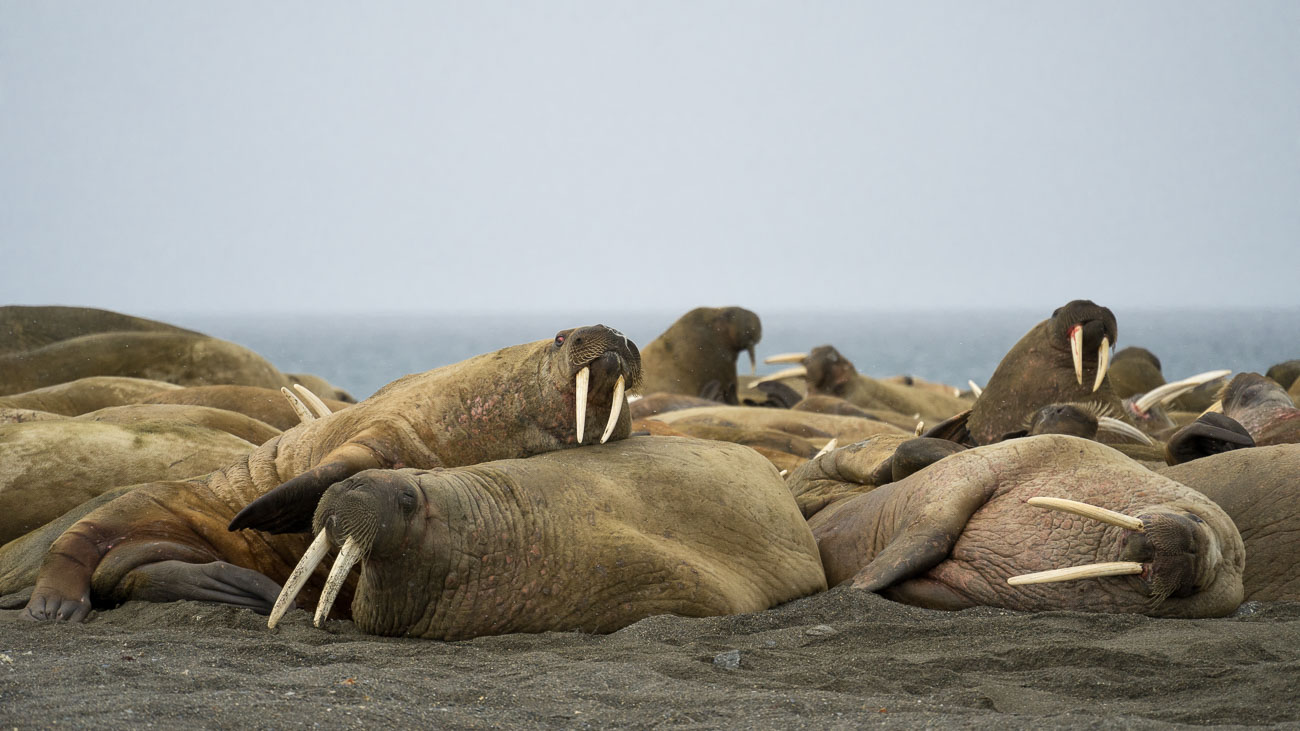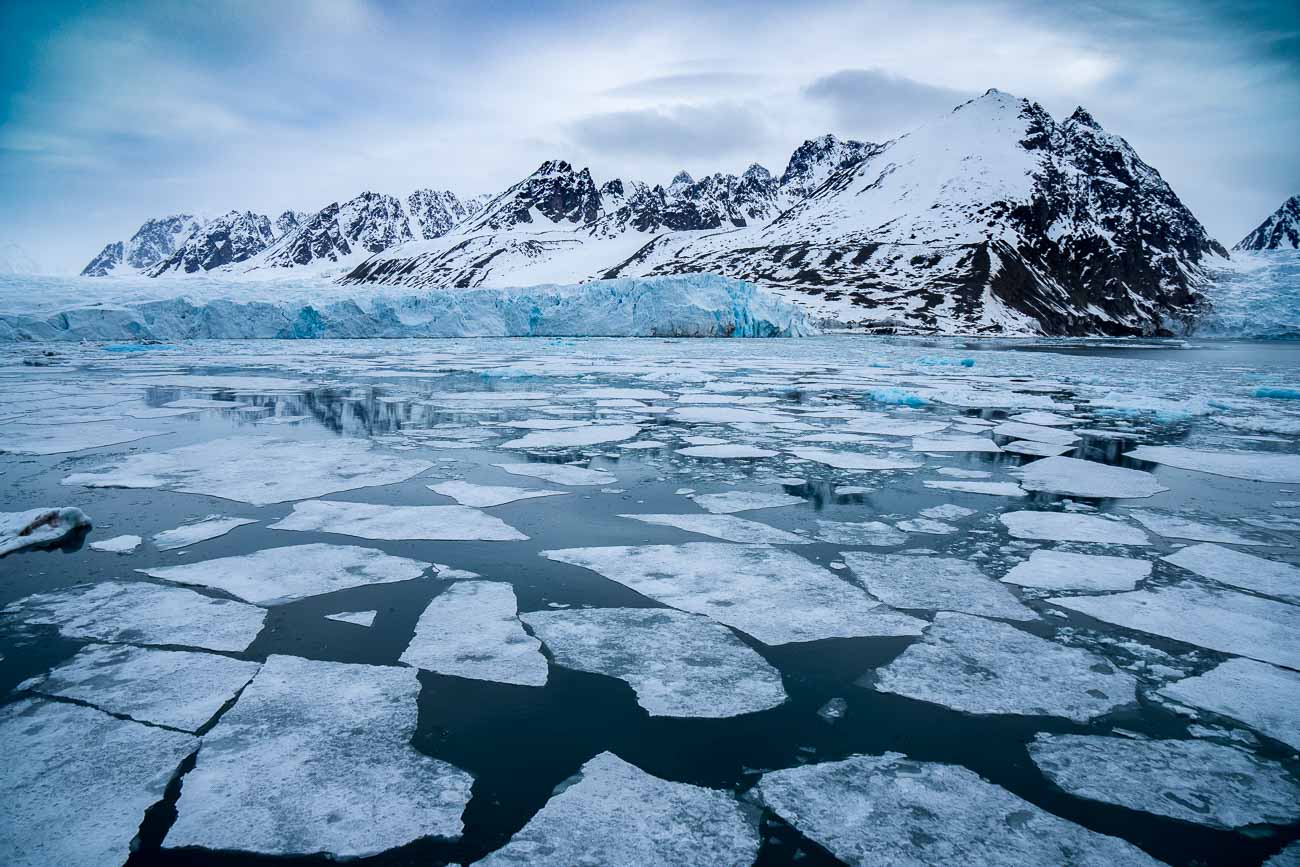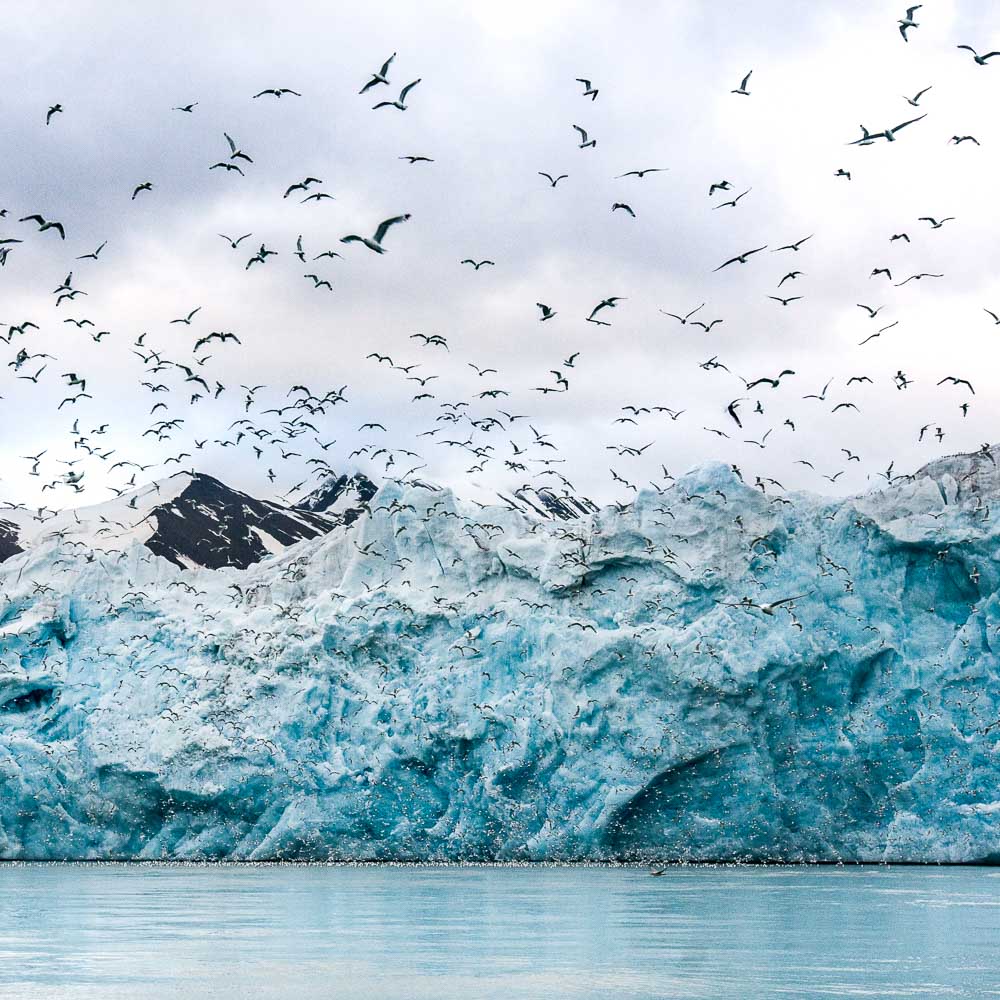
DISCOVERING THE SVALBARD ARCHIPELAGO
DISCOVERING THE SVALBARD ARCHIPELAGO
DISCOVERING THE SVALBARD ARCHIPELAGO
DISCOVERING THE SVALBARD ARCHIPELAGO
Why visit Svalbard ?
Among the many ways to discover this place, I will describe the most common way to explore the region: by ship during the summer time. Summer is very short in the high arctic and that’s the best opportunity to see wildlife, when all the animals need to breed. Moreover, the permanent daylight, after the long and dark winter months, make these wildlife encounters possible whatever the time of the day! The richness and variety of landscape, fauna and flora around Svalbard is a gem in the high arctic during summer. Indeed, you know that the polar regions are deserts. So, the biodiversity is very low. However, in comparison with the rest of the high arctic, Svalbard offers a wide range of wildlife and scenery to observe. This is also a place that is “easily” accessible by plane. There is no road, and no facilities ashore (except at the capital city, a scientific village, or at a mining town…) and for all these reasons, Svalbard is the most common destination to explore by ship in the high arctic.
What can you see?
Landscape
The Western part of the archipelago is under the influence of the Gulf stream, which makes it warmer than the Eastern part. The Western part is formed by peaked submits and mountain ranges, and the coastline is much greener, offering an abundance of vegetation, a beautiful tundra and arctic flowers whereas the Eastern side is much more hilly with smoother contours, very mineral, the ground is covered by a very poor tundra, there is much less even sometimes no vegetation, and it is colder and the great icecaps and barrier of ice are located on the Eastern side too. Finally, depending on the season, fjords are more or less covered with sea ice grounded on the shoreline (the so-called “fast-ice”), whereas the drifting sea ice is located North of the archipelago. Glaciers are also a very strong attraction. Do not worry about not seeing some of them as there are more than 2500 glaciers in Svalbard!
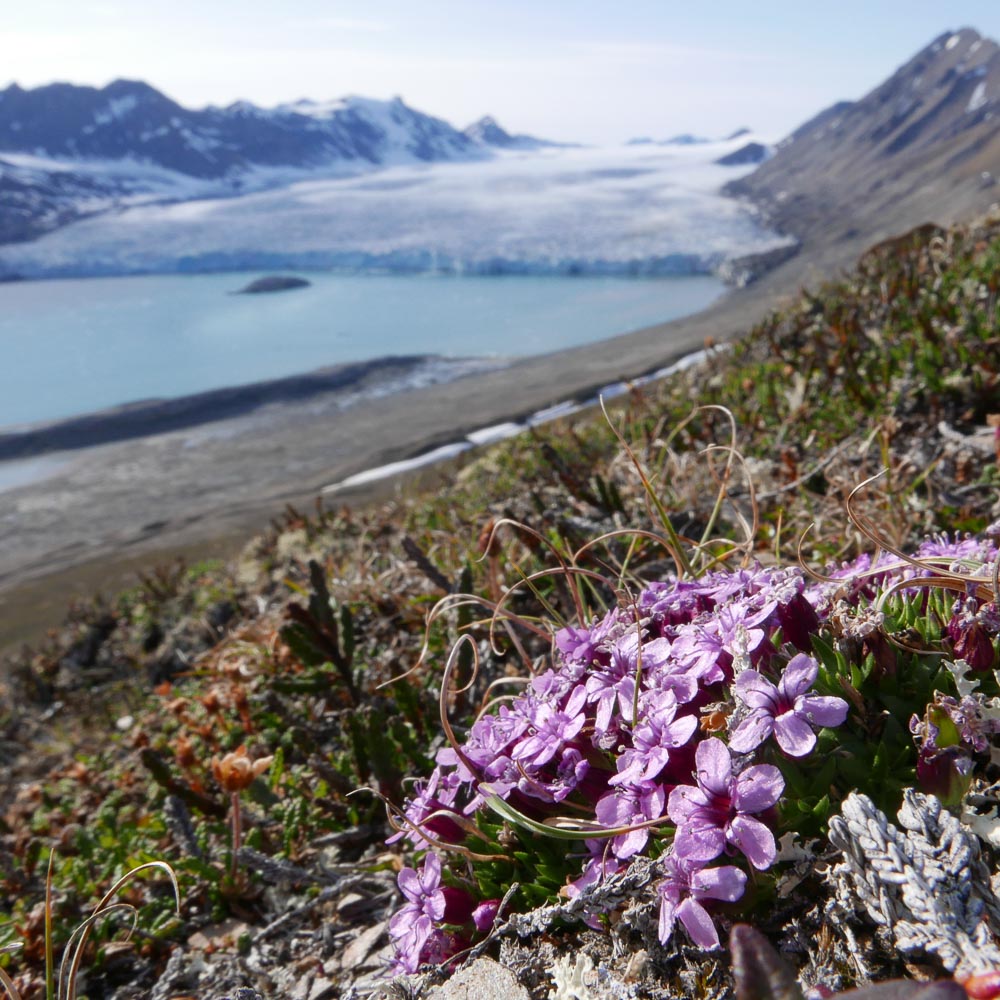
The luxurious tundra and peaked submits from the Western coast of Svalbard at St Jonsfjord

The very mineral and arid landscape of the Eastern coast of Svalbard, typical with low plateau mountains, here at Palanderbukta
Wildlife
Polar bears (or white bears)
Yes, they are in the area! You need to know that bear encounters are unpredictable. No company, nor any guide can promise to see bears. Although it is true that I have never done a trip around Svalbard without finding a bear, every observation has been extremely different. Some can be extremely close, some from far away through binoculars. You are in the wild, and bears roam thousands of miles (or kilometers) per year. The motto in polar bear territory is: “bears can be anywhere, at any time”. So, if you ask the question: “can we see a bear today?” the answer will always be: “yes, we can!”. But no one can guarantee when, where and under which circumstances this will occur.
To put all chances of spotting a bear on your side: pack your binoculars, and constantly be alert, be especially observant along the coastline and each piece of ice floe during the whole day. This is the method to spot a bear! Of course, the more flexible you and the ship are, the more likely it is to find wildlife.
Walrus
Walruses are amazing animals! They are only present in the high arctic and have been almost wiped out from the archipelago by the early hunters in the XVIIIth and XIXth century. Now, populations are recovering and you can find them in a lot of places! You’ll see them from the ground as they are resting, or from the water, as they swim close to their hauling site. Sporadically, one or more can pop up anywhere from the water surface. I find them easy to see and find.
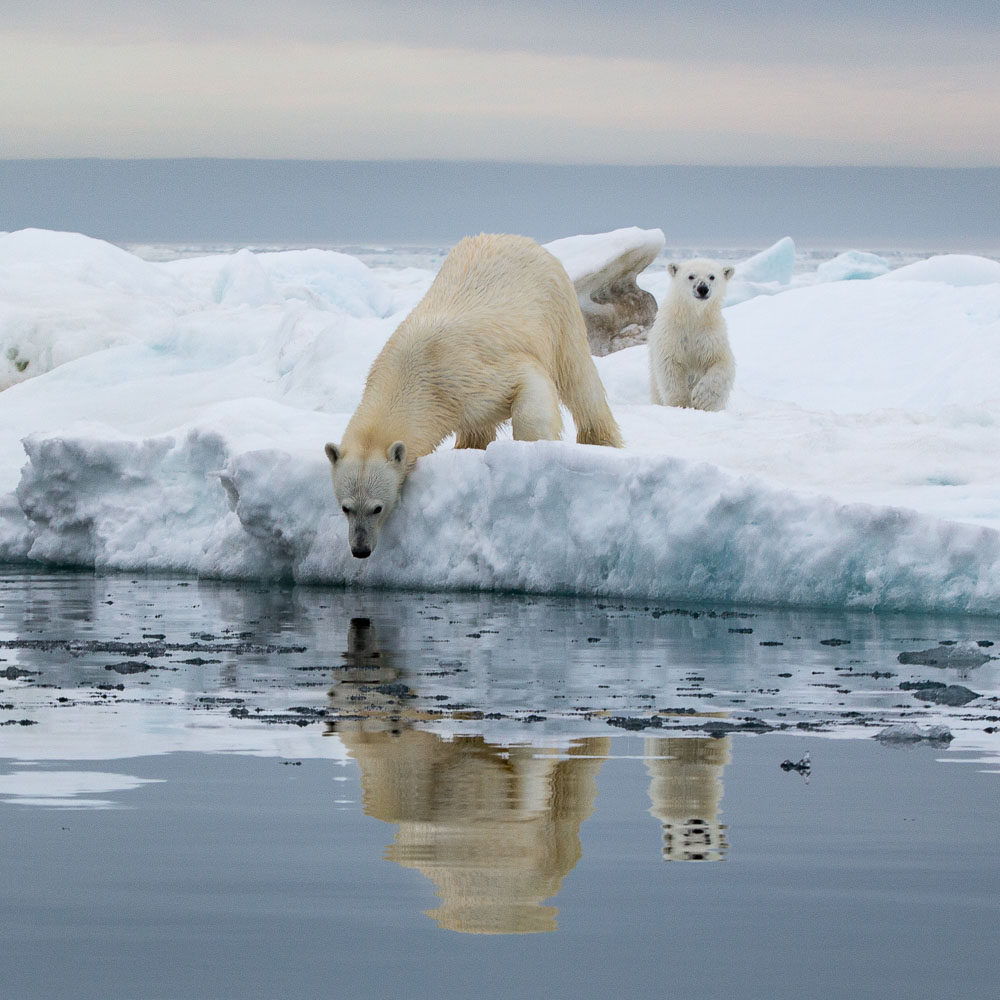
A mother and her cup of the year on the sea ice around the seven islands, Svalbard
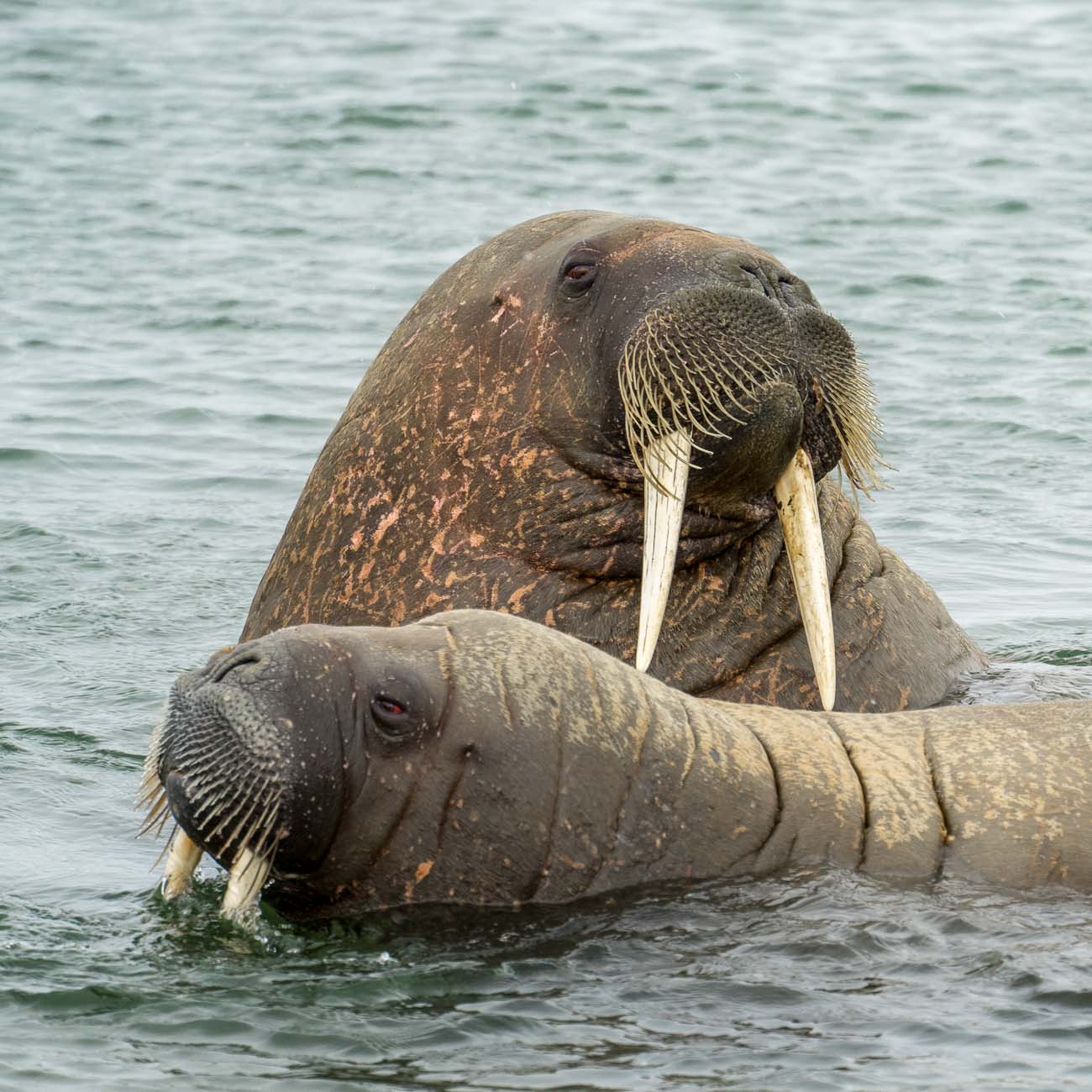
Walruses at Poolepynten, Svalbard
Whales
he most emblematic whale of the high arctic, as emblematic as the polar bear, is without any doubt the beluga, also called the white whale. They travel in groups along the shoreline and the sea ice. Each encounter with belugas is magic. Some trips you see them, some you don’t.
You can also see arctic minke whales, hanging around in the fjords, as well as humpback whales. In the deeper fjords and away from the coastline you can see also dolphins, fin and sei whales and if you’re very lucky blue whales.
I have only ever seen Bowhead whales once around Svalbard. I have never seen Orcas nor Narwhals in these waters.
Seals
The most common seal species to observe around the archipelago are bearded seals and ringed seals. Sometimes you can be lucky enough to cross the path of one (or thousands!) Greenland seals. Hooded seals more pelagic are more difficult to see close to the archipelago.
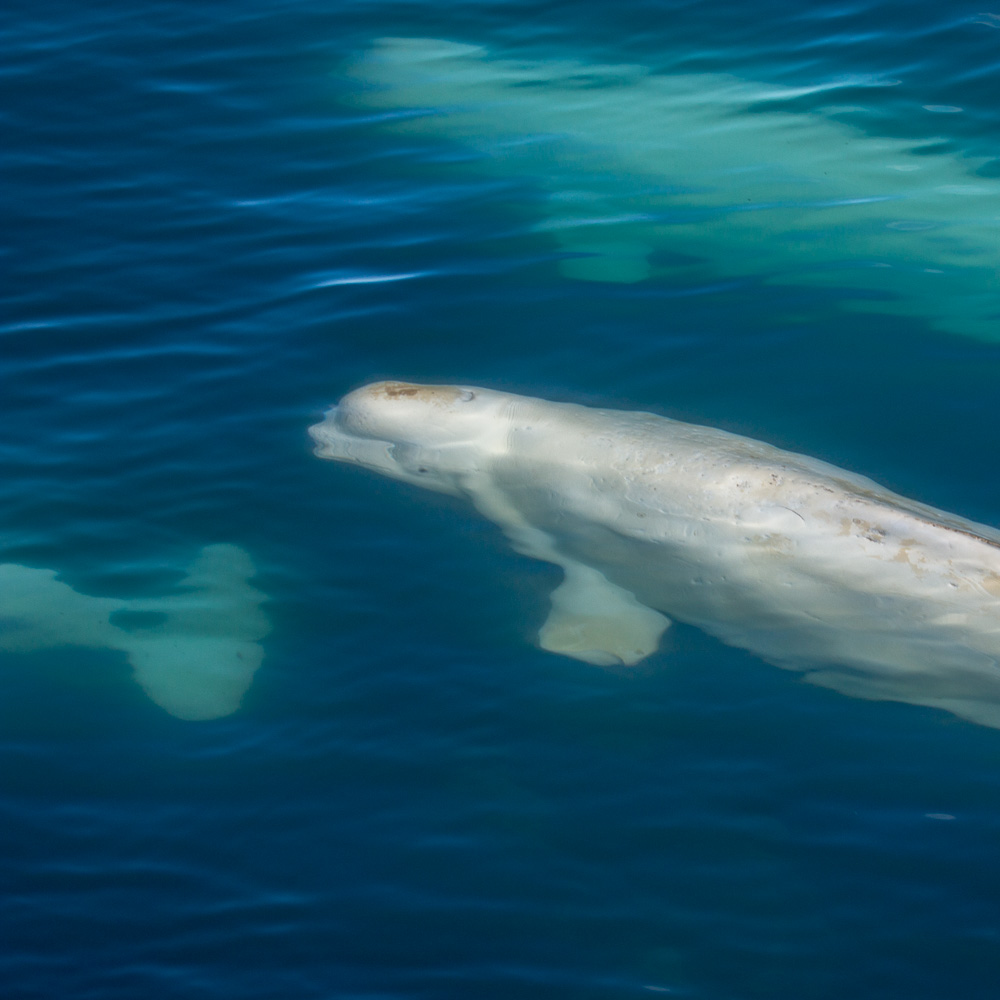
A beluga whale swimming along the coast down the cliff at Alkhornet, Svalbard
Land mammals
Around 10 000 reindeers graze along the coastline of Svalbard each summer. They are easy to spot at a distance, and they can be approached from very close, and on occasion, they may approach you. Svalbard reindeer are inoffensive and much smaller than his cousin from warmer latitudes.
Arctic foxes are super fun to watch. Smaller than the red fox with white fur, they are neither a threat to you, nor scared by you and you can enjoy some very close encounters when they are curious.
There are no rodents (one exception close to the capital), hares, musk oxen or wolves in Svalbard.
Birds
The appealing and comic guillemot family is highly present. The “sound of the arctic” given by the little auk is worth a trip to the great North! You also have arctic terns, geeze (barnacle and pink-footed), northern fulmar, black-legged kittiwakes, snow bunting, glaucous gull, ivory gull, rock ptarmigan, skuas, divers, phalaropes, etc… and the northernmost puffins of the planet (though only a few nests)!
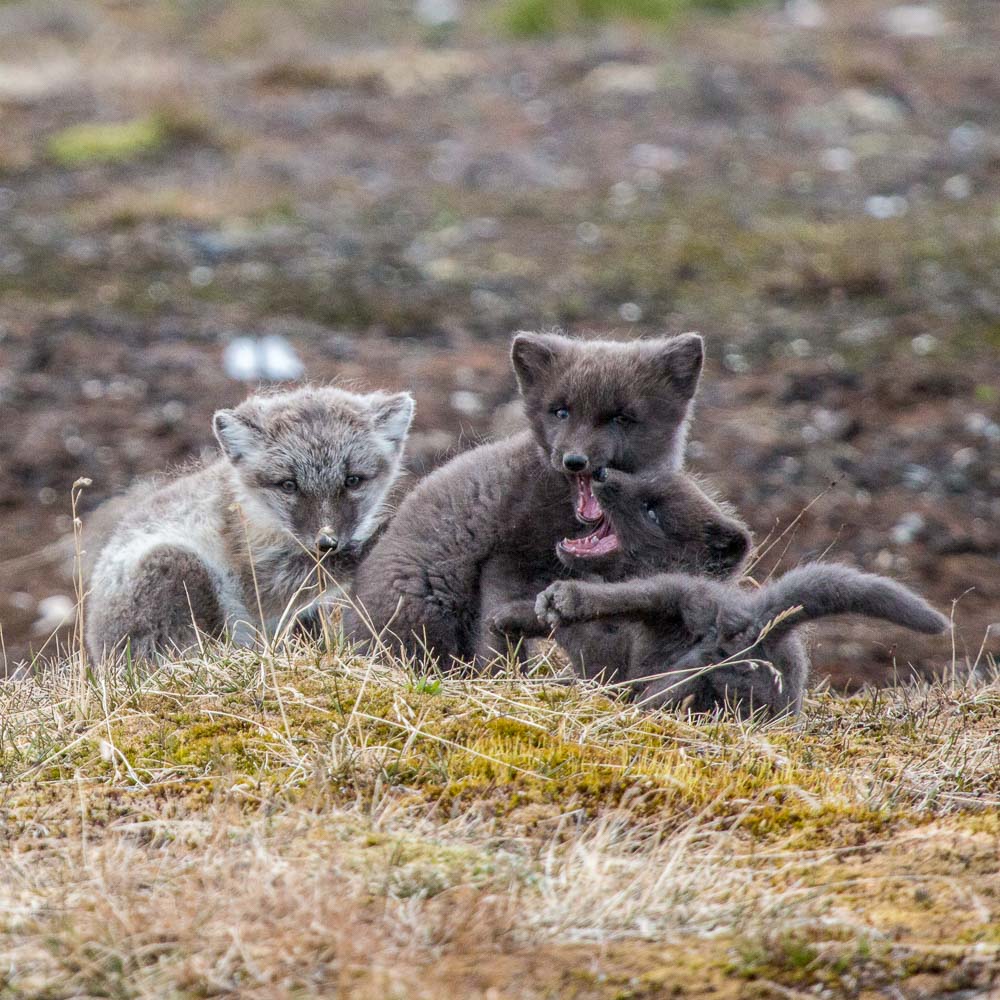
A brotherhood of arctic foxes playing in the tundra at Bamsebu, Svalbard
Ice
Around the archipelago you will enjoy watching many tidewater glaciers, as well as many different shapes of icefronts, releasing their icebergs into the fjords. You will mostly find medium to small sized icebergs around the archipelago. Icecaps are located on the Northeast, where you can find the longest icebarrier of the Northern hemisphere! Naturally, you'll also see some sea ice in the fjords (early in the season) and the drifting sea ice that extends to the North Pole (for how long ?...).
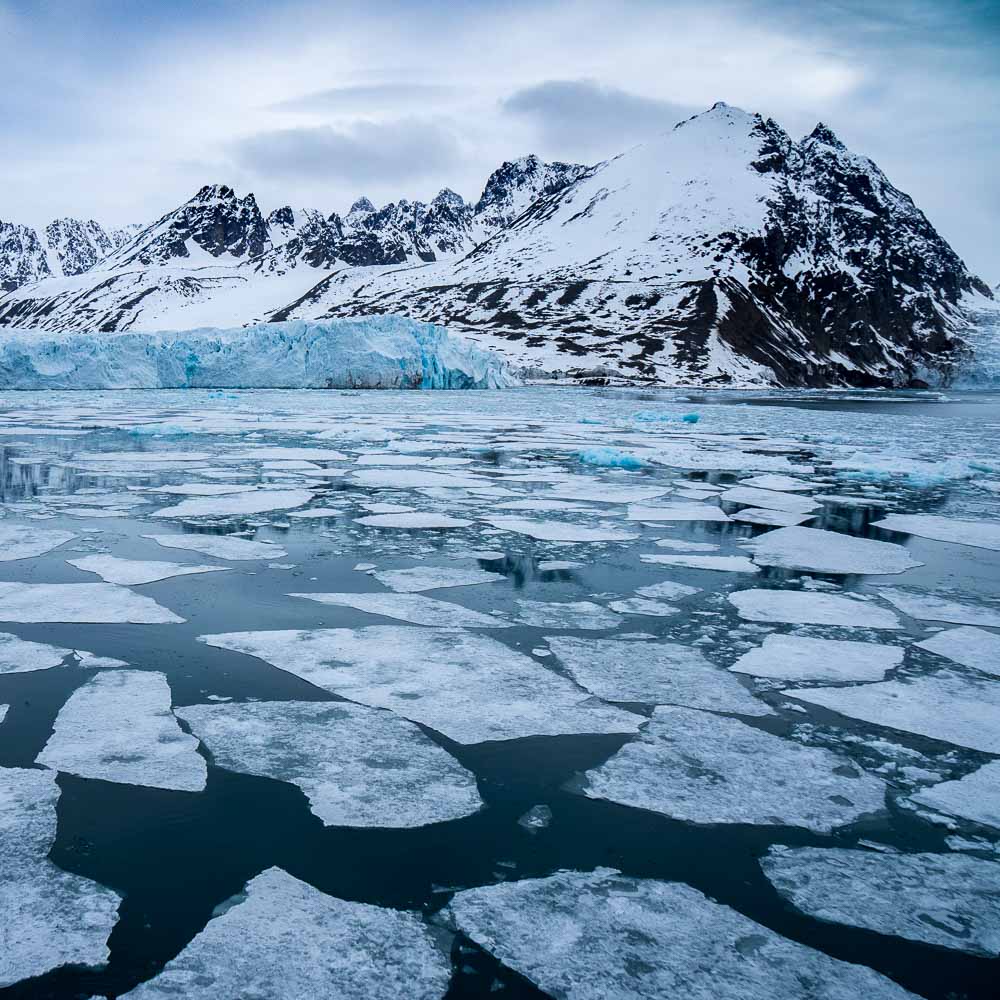
Broken sea ice in front of Monaco glacier, Svalbard
Places of historical interest
Since the official discovery of the archipelago by Willem Barents in 1596, several waves of exploration followed. Nowadays, you can find traces of each one of these steps of human conquest.
Whaling and hunting
Several thousands of whaler graveyards and whale bones are scattered all along the shoreline of the archipelago. Some places are even classified as historical sites. Traps and huts of trappers are still visible.
Polar exploration
In the late XIXth century and the beginning of the XXth century, the most famous characters (Salomon, Nordenskjöld, Amundsen, Nobile...) of polar explorations as well as some lesser known explorers passed by Svalbard. They used it as a springboard to reach other places higher North or trained there for future expeditions.
Mining
A lot of wooden huts, sometimes used today as a refuge for hikers, show that men tried everything (in vain) at the start of the XXth century to exploit all resources. Some mines are actually still running for political interest, while others now look like ghost towns.
Science
More interesting than mining, old relics of scientific expeditions can be found ashore, as the position of the islands in the North are paramount for measurements. In the field of geodesy, for example. Nowadays, it is even possible to visit a modern scientific station. The only one, of course, is in Svalbard.
What is the best time to visit Svalbard ?
Once again, you can visit Svalbard all year round. The season by ship starts in May and ends in September. Please find my recommendations bellow. Trips in Svalbard before the month of May, focus on landscape photography, auroras, ski-expedition, dogs sledding, snow-mobiling…
May
I would say that May is very early in the season, making it “early spring” in Svalbard. Temperatures are still a few degrees below freezing, which makes the view extremely clear as there is no fog. The whole archipelago is covered by snow, which makes this a good time for ship-skiing: each day a ship drops you off for skiing at one place and picks you up at another one.
At the same time, the first “regular” passengers (non-skiers or sport oriented travelers) visit the place. I greatly enjoy Svalbard during the month of May, as the scenery at this time of the year is a huge contrast to that of the summer time. In the “Spring”, the green of the vegetation and tundra is covered by snow, and there is a lot of sea ice everywhere, which makes a lot of places inaccessible around the archipelago. The birds start coming back from their wintering spots, and thousands of them fly all over the place.
What I enjoy the most at this time of the year is all the animals are white! Reindeers, foxes, bears, ptarmigan… you will see them all in a pure pristine white environment.
This is the best time of the season, as well as the month of June, to see polar bears on the ice from a ship...
The density and numbers of animals to observe in May is very low if you compare it with late June or July, as the mammals are scattered on the large extent of sea ice. May is the time to go if you like the feeling of being surrounded by a white virgin environment and want to increase your chances to see bears on the sea ice.
June
In June, the snow is melting very quickly. At the end of June, the entire coastline of Svalbard will be snow-free, thus exposing a luxurious flowering tundra and some very green sites. The bird cliffs are super busy; there is still a lot of sea ice to observe, although it is retreating day after day, which offers more options to explore in the fjords. Days are warming up a bit which is more enjoyable as the temperature are now above freezing.
July
I really enjoy Svalbard in early July through mid-July. This is the peak of summer. After mid-July, the arctic tundra starts drying, a sign that the arctic autumn is beginning. There is still a lot of activity around the bird cliffs. The peaks and submits of the mountain chains are no longer covered by snow. The last ice floes in the fjords and straits are melting, and at the end of July, weather permitting, you should be able to circumnavigate the whole archipelago. The reindeer and foxes are brown and have already shed their winter coats in June. You will see polar bears walking along the shoreline, on rocks, on the tundra, looking for a carcass or a sleeping seal nearby. The drifting sea ice is quite far North and you will need to navigate overnight to reach it, so it is more difficult to watch a polar bear on the sea ice at this time of year. Temperatures are warmer, and fog can happen at any time!
August
This is the end of the breeding season. The whole archipelago should be free of sea ice at this time of the year. That’s autumn in the high arctic. In early August, most of the little auk are gone already and after mid-August, most of the bird cliffs are empty. The tundra is dry and no more flowers are to be observed. There is no more snow and instead mud and soft ground will block your way. Polar bears save their energy on land by sleeping as much as they can… you can see reindeer shedding their velvet; arctic foxes turning white to prepare themselves for the coming winter…
August however, can be a good opportunity to reach places very often locked by sea ice, like the far North East of the archipelago.
How to prepare for your trip ?
Bring a good pair of binoculars! and a good telephoto lens!
Any doubts, questions, or more informations?
Contact mePlease find a few books and a map that I recommend bellow. A map is, of course, essential to have. These readings mostly cover wildlife, which is the most essential part of the voyage. Two books address polar bears: one is about the natural history of the animal, while the other deals specifically with politics, threats and conservation. Otherwise, the guide book about coastal wildlife is easier to read and will give you the main feature of the wildlife you'll observe in the high North. Enjoy!
as an Amazon associate I earn from qualifying purchases
Book
Arctic: a guide to coastal wildlife

By Tony Soper
A very easy and practical guide book to read. Succinct information and painted illustrations are covering the most essential species of animals you'll see in the high arctic.
Map
Spitsbergen explorer: map of the Svalbard archipelago

On one side there is a clear and uncluttered map of the archipelago, with useful annotations; on the reverse there are excellent biographical summaries of 27 noted explorers plus brief descriptions and colour photographs of the more common plants, invertebrates, birds and mammals.
Book
Polar Bears: the natural history of a threatened species

By Ian Stirling, one of the few world's experts about polar bears.
A very comprehensive and beautiful book if you want deep knowledge about this species.
He explains their evolution, life history, behaviour, how they are researched, and the current threat to their very existence.
Book
Polar Bears on the edge: heading for extinction while management fails

By Morten Jorgensen
How much do you like Polar bear ? This is what Morten would tell you if you had the opportunity to meet him. Very likely the most honest book I have ever read about the topic, shortly described here by his own words:
The climate is changing, sea-ice is melting, polar bears are suffering. And yet, the establishment accepts that about 1.000 polar bears are hunted every year. On average, one polar bear is shot every 9 hours, or almost 3 every day. Polar bears are systematically being hunted out.
A new book documents how lack of political courage and the corruption of science and management by commercial interests combine to threaten polar bears as much as global warming. “Polar Bears on the Edge” is a relentless account of polar bear management failure and a daring attempt to finally initiate true protection of the species before it is too late.
